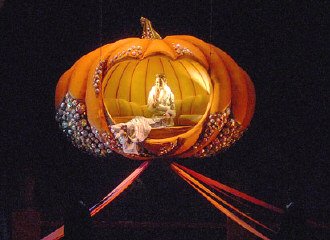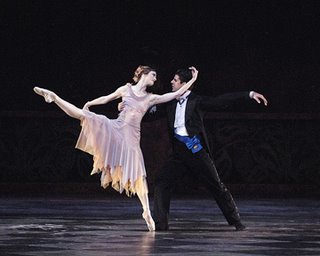The New Cinderella Story
On July 15, the American Ballet Theater (ABT), one of the premier U.S. dance companies, is concluding its two-month season at the Metropolitan Opera House at Lincoln Center in New York. This season’s program is a classical ballet hit parade featuring Swan Lake, Romeo and Juliet, Giselle, Le Corsaire, and Manon. A centerpiece of the program was the U.S. premiere of James Kudelka’s production of Cinderella, which he originally created for the National Ballet of Canada in 2004.
Based on Charles Perrault’s fairy tale, the music for Cinderella was composed by Sergei Prokofiev. The composer began working on the music score in 1940, inspired by the success of his ballet Romeo and Juliet. This work was interrupted by World War II and completed only four years later. Premiered in 1945, in Moscow’s Bolshoi Theater, Cinderella became one of the greatest ballets of the 20th century. Since then, many choreographers have tried their talents in retelling the Cinderella story.
“I wanted to give the characters a human texture,” said Kudelka about his current production of the famous ballet. He envisioned the title heroine not only as a fairytale personage but also as a real person.
Kudelka’s Cinderella is a provincial girl and a dreamer, who enjoys tidying up the house, working in the garden, and dancing. She is ignored by other members of the household: the stepmother is self-absorbed and often too drunk to pay attention to her, and the stepsisters are interested only in fashion and social life. In her family, Cinderella is unnoticed and unloved, but by no means abused or humiliated.
Kudelka decided to replace the famous glass slipper with a sparkling pointe shoe. As a result, in this story, the Prince is looking for the best dancer. When he finally finds Cinderella, they settle in a small cottage, choosing a quiet, provincial life over the splendor of the Royal Palace.
David Boechler’s stage decorations and costumes were inspired by works of French painter and designer Erté and evoke the Art Deco era. I found the stage décor of the second act particularly appealing. Cinderella’s arrival at the Royal Ball, descending from above in a glowing Sputnik-like giant pumpkin, was absolutely spectacular. The search-around-the-world imagery of the third act, depicting a globe projecting on a white backdrop, also deserves a special mention: the idea is simple, yet compelling and visually pleasing. During the matinee performance on June 10, Julia Kent as Cinderella was fantastic, dancing barefoot, in one shoe, or with both pointe shoes on. Charmingly light and ethereal, she was gracefully moving on stage, as if gliding, so even the most complex pas looked effortless and natural. When her Prince Charming made his appearance in the second act, the show took a new turn. Now it was the Prince Story. Marcelo Gomes, clad in a black tuxedo, looked simply irresistible. His performance was grand and assured, like a dancing Hercules. He could lift Cinderella like a feather, making their romantic duets utterly enchanting. Erica Cornejo and Carmen Corella as the stepsisters demonstrated that they are not only fine dancers but also great comediennes. Dressed first in bright multicolored silk dresses and later in black-and-white ball gowns, it seemed like they wandered in from a Broadway musical. Comical choreography made their characters look humorous and likable. The four officers danced by Jared Matthews, Jesus Pastor, Sascha Radetsky, and Gennadi Saveliev, who accompanied the Prince in his search for the owner of the missing shoe, were excellent, too. The second-act ball scene was a beautiful showcase of the ABT’s corps de ballet.
During the matinee performance on June 10, Julia Kent as Cinderella was fantastic, dancing barefoot, in one shoe, or with both pointe shoes on. Charmingly light and ethereal, she was gracefully moving on stage, as if gliding, so even the most complex pas looked effortless and natural. When her Prince Charming made his appearance in the second act, the show took a new turn. Now it was the Prince Story. Marcelo Gomes, clad in a black tuxedo, looked simply irresistible. His performance was grand and assured, like a dancing Hercules. He could lift Cinderella like a feather, making their romantic duets utterly enchanting. Erica Cornejo and Carmen Corella as the stepsisters demonstrated that they are not only fine dancers but also great comediennes. Dressed first in bright multicolored silk dresses and later in black-and-white ball gowns, it seemed like they wandered in from a Broadway musical. Comical choreography made their characters look humorous and likable. The four officers danced by Jared Matthews, Jesus Pastor, Sascha Radetsky, and Gennadi Saveliev, who accompanied the Prince in his search for the owner of the missing shoe, were excellent, too. The second-act ball scene was a beautiful showcase of the ABT’s corps de ballet.
This new production is a vivid comedy, with plenty of imaginative choreography and eye-catching costumes and decorations. What this Cinderella doesn’t have is a sense of magic... but it offers a good laugh and spectacular dancing.





















































No comments:
Post a Comment